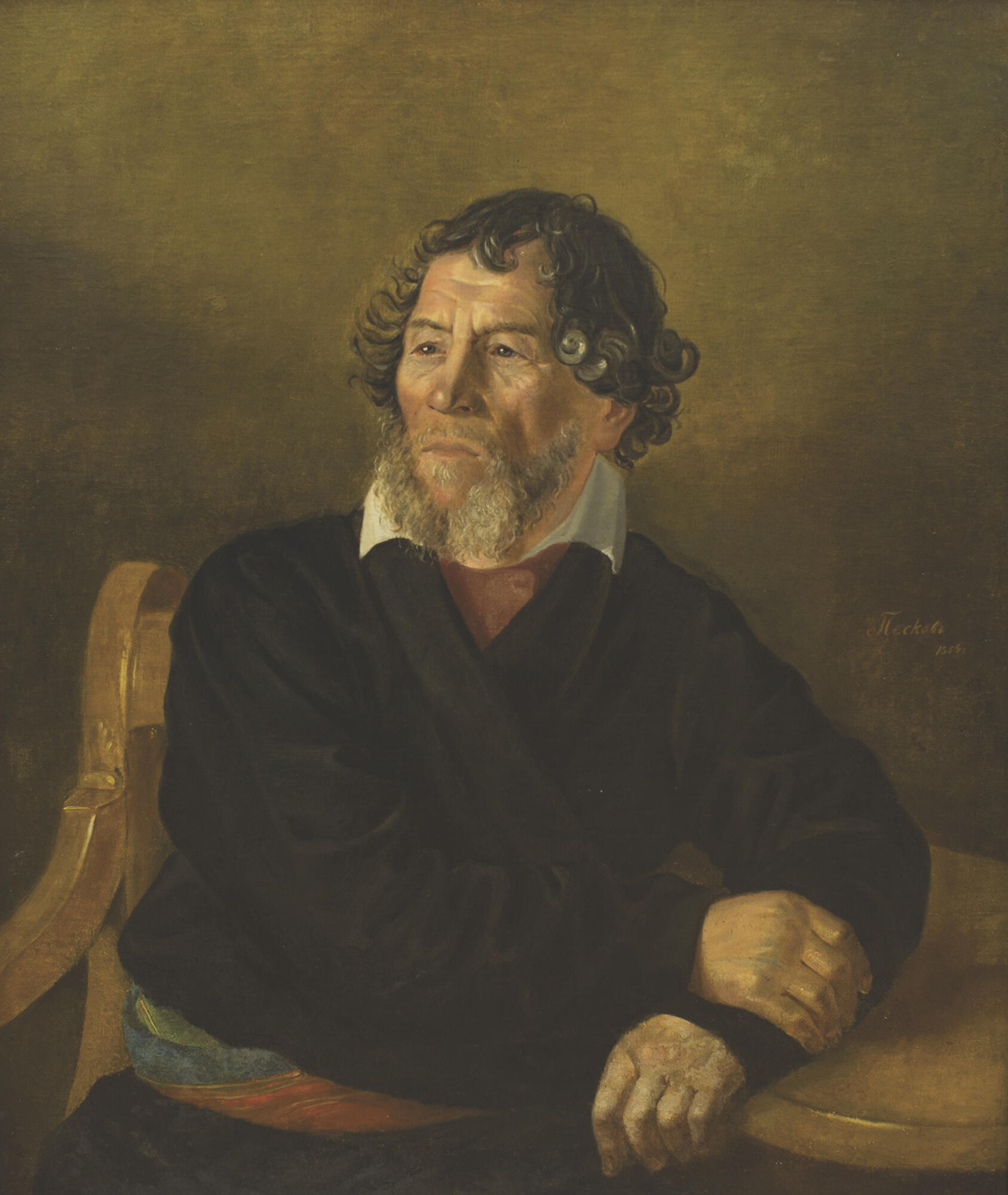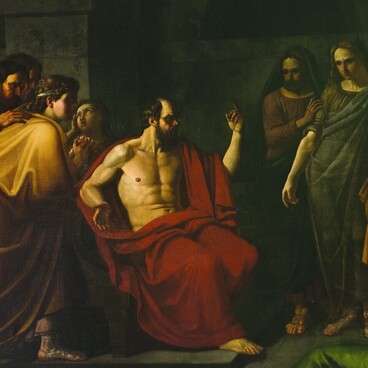Mikhail Peskov, who painted the portrait, became the first student of the Academy of Arts in St. Petersburg, who came from Siberia. His portraits were so successful in Irkutsk alone that the young painter’s fame reached the Governor-General of Siberia Nikolai Muraviev. It was at his request that Peskov was admitted to the Academy at the expense of the city.
After eight years at the Academy the artist became popular through the exhibitions and received academic medals for his achievements.
Mikhail Peskov communicated with the Siberian community in St. Petersburg. The famous scientist Grigory Potanin wrote, “The members of this circle were all going to return to their homeland to serve it. Peskov made plans, having saved up a small fortune, to found a school of painting in Irkutsk.” Irkutsk residents, in turn, remembered their fellow citizen and were proud of his success.
Peskov was the first on the list of 14 graduates who competed for the big gold medal. However, an outstanding event took place, which was highly important for the history of Russian art: for the first time in 200 years that the Imperial Academy had been existing, its graduates refused to take part in the completion and create a painting on a given topic. Instead, they addressed the Council of the Academy and requested to allow a free choice of the subject matter. After receiving a refusal, on the day of the exam, Ivan Kramskoy and Mikhail Peskov, on behalf of the other students, asked the Council to release them from participating in the competition. The rebels left the Academy and soon organized the “Artel” — a kind of a commune. They rented a large apartment, where they began to live and work together.
Peskov immediately started elaborating on his favorite Siberian themes: “Stenka Razin” and “The Capture of Isker by Yermak”. The first-year student Ilya Repin often dropped in to see members of the Artel. He reminisced later,
After eight years at the Academy the artist became popular through the exhibitions and received academic medals for his achievements.
Mikhail Peskov communicated with the Siberian community in St. Petersburg. The famous scientist Grigory Potanin wrote, “The members of this circle were all going to return to their homeland to serve it. Peskov made plans, having saved up a small fortune, to found a school of painting in Irkutsk.” Irkutsk residents, in turn, remembered their fellow citizen and were proud of his success.
Peskov was the first on the list of 14 graduates who competed for the big gold medal. However, an outstanding event took place, which was highly important for the history of Russian art: for the first time in 200 years that the Imperial Academy had been existing, its graduates refused to take part in the completion and create a painting on a given topic. Instead, they addressed the Council of the Academy and requested to allow a free choice of the subject matter. After receiving a refusal, on the day of the exam, Ivan Kramskoy and Mikhail Peskov, on behalf of the other students, asked the Council to release them from participating in the competition. The rebels left the Academy and soon organized the “Artel” — a kind of a commune. They rented a large apartment, where they began to live and work together.
Peskov immediately started elaborating on his favorite Siberian themes: “Stenka Razin” and “The Capture of Isker by Yermak”. The first-year student Ilya Repin often dropped in to see members of the Artel. He reminisced later,




